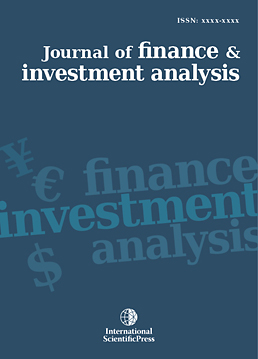Journal of Finance and Investment Analysis
Have bull and bear markets changed over time? Empirical evidence from the US-stock market
-
 [ Download ]
[ Download ]
- Times downloaded: 11408
-
Abstract
This contribution analyzes bull and bear markets from 1954:1-2011:2 in the US-stock index S&P 500. Thereby, a 2-State-Markov-Switching model is applied to figure out bull and bear market regimes within the latter period, whereby the estimated state probabilities are used to estimate a dummy variable model by employing operational criteria. A sample-split analysis, where the data set is divided into two samples of equal length, gives evidence for a structural break in the expectation of returns being associated with bull market regimes whereas no structural break can be ascertained concerning bear market regimes. This outcome has strong implications for modern asset allocation theory which takes the presence of regime switching into account as investors who expect a significant increase in stock returns would allocate a higher weight to stocks even though they would face bull market regimes at the time point when deciding on asset allocations.
